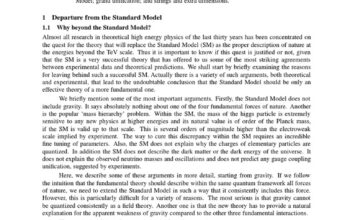The allure of gold transcends mere aesthetics; it is an elemental treasure that has captivated humanity for millennia. To examine gold from a scientific standpoint reveals a conglomeration of fascinating characteristics that underline its prominence in both cultural and economic spheres. This article delves into the intrinsic properties, historical significance, and contemporary applications of this precious metal, illuminating why gold continues to fascinate and inspire.
Gold, with the chemical symbol Au, has an atomic number of 79, rendering it one of the heaviest non-radioactive elements found on the periodic table. Its unique electronic configuration—[Xe] 4f14 5d10 6s1—affords it remarkable stability and resistance to corrosion. Unlike many metals, gold does not tarnish or oxidize, maintaining its luster over time. This inherent durability is a primary factor in gold’s status as a symbol of wealth and luxury.
Gold’s distinctive color and appearance can be attributed to its electronic structure and the interaction of light with its surface. Unlike silver, which reflects a broad spectrum of light and exhibits a silvery sheen, gold absorbs light in the blue and violet wavelengths and reflects the red, orange, and yellow. This phenomenon is technically explained by the concept of plasmon resonance, where the conduction electrons in gold resonate with incoming light, resulting in the metal’s characteristic warm hue.
One cannot overlook the historical significance of gold, which has served as a medium of exchange, a standard for currency, and a symbol of divine favor across various cultures. The ancient Egyptians revered gold, with the pharaohs buried in ornate sarcophagi laden with golden artifacts thought to ensure their passage into the afterlife. This pattern was echoed in ancient Mesopotamia, where gold became an integral part of trade and commerce, establishing itself as the raw material for early monetary systems.
As civilization progressed, gold’s desirability burgeoned. The establishment of the gold standard in the 19th century marked a pivotal moment in economic history, as nations pegged their currencies to a specific amount of gold, fostering international trade and economic stability. This historical reliance on gold not only underscores its value but also illuminates the psychological and sociocultural constructs surrounding wealth and prosperity. The idea of ‘going for gold’ is thus steeped in layers of historical significance beyond its mere physical form.
Alongside its economic applications, gold possesses utilitarian properties in the realm of modern science and technology. For instance, in electronics, gold is utilized as a highly efficient conductor of electricity and is employed in high-end connectors, circuit boards, and semiconductor technologies. Its resistance to corrosion and oxidation makes it invaluable in the production of reliable and durable components. Moreover, gold nanoparticles have found applications in biomedical fields, particularly in targeted drug delivery and diagnostics due to their biocompatibility and ease of functionalization.
Gold’s role in catalysis cannot be overstated; research has elucidated that gold catalysts exhibit unique properties that can lead to significant advancements in chemical reactions. In heterogeneous catalysis, gold nanoparticles can significantly enhance reaction rates, offering environmentally benign alternatives to traditional catalysts that utilize precious metals like platinum. This functionality raises intriguing possibilities for sustainable chemistry, as the quest for greener technologies becomes increasingly imperative in modern society.
Furthermore, the fascination with gold extends into the realm of art and aesthetics. The durability and workability of gold have made it a preferred medium for artisans and jewelers throughout history. From the intricate designs of ancient jewelry to the contemporary styles in haute couture, gold continues to inspire creativity. Its malleability allows it to be shaped into products of extraordinary beauty, serving as a testament to the timeless appeal of this remarkable metal.
Gold’s significance is not merely confined to its economic or physical properties; it also embodies deep-seated values associated with status, prestige, and immortality. It has been employed as an allegorical device in literature and philosophy, representing ideals such as purity and transcendence. The quest for gold in these domains often reflects a broader human pursuit of meaning and aspiration. Whether viewed through the lens of material wealth or spiritual significance, gold remains a representation of that which is coveted yet elusive—a connection to both earthly existence and transcendent dreams.
In conclusion, the multifaceted nature of gold is a microcosm of humanity’s relationship with the material world. Its unique physical properties, rich historical narrative, and evolving technological applications elucidate a profound truth: the fascination with this precious metal is neither spontaneous nor superficial. The phenomenon of ‘going for gold’ is, at its core, an exploration of intrinsic value that extends beyond currency and economics, inviting a reflection on broader themes of aspiration, legacy, and the enduring connection between nature and human culture. As researchers and enthusiasts alike continue to delve into the complexities of this elemental substance, one can only surmise that gold will remain an enduring object of intrigue and admiration for generations to come.












